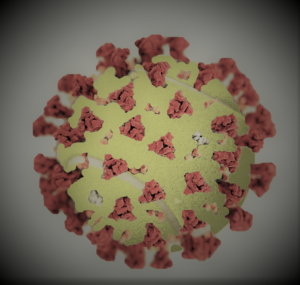I was kind of surprised at the focus of the most skeptical comments I received following “Special Edition: COVID-19 and Recreational Tennis.” Those comments were in response to the recommendation to have a dedicated set of balls for each player and to avoid touching the other players balls. A few people asserted that it would simply be impossible to do that. There was also a contingent that conceded that it was possible, but regarded the practice as more trouble than it is worth.
Fast forward to now, there are many examples of “no ball sharing” restrictions being placed on facilities and events. I have started generally referring to this as “ball hygiene.”
This is the perfect time to share an amazingly awesome video from Nassau, New York, explaining good ball hygiene practices. I love how the guy to the left flinches during the description.
The recent “made for TV” pro matches modeled the “no ball sharing” policies in action. I think that it is quite likely that we will see that practice continue throughout the remainder of the year. I think that makes the ball hygiene seem decidedly less “fringe.”
In my own playing circles, I have one recurring training partner that is insistent and vigilant about practicing good ball hygiene. I also have a regular training partner who believes that the risks associated with COVID-19 are vastly overstated and that it is a ridiculous idea to even consider playing with separate balls.
Ball hygiene is challenging because we have absolutely no real data on how long the SARs family of viruses linger on the surface of a tennis ball. In “Special Edition: COVID-19 and Recreational Tennis,” I analyzed peer-reviewed medical research data from studies of the SARs family of viruses on hospital gowns, which is the closest analog to a tennis ball I could find. According to the research referenced in that post, a virus might survive on the ball surface anywhere from five minutes to two days.
The problem with COVID-19 is the critical variables that drive risk calculation have entirely unknown quantities. This directly leads to the widely divergent range risk perception in individuals. Tennis balls are fundamental to playing tennis, and we simply to not have any data about the probability of virus transmission via that medium. Consequently, we do not understand the presence or absence of risk.
There is nothing that can be done about the unknown risk associated with COVID-19 transmission via tennis balls right now. Medical resources should be prioritized and focused things like vaccines and treatments. However, at some appropriate point in the future, one of the tennis industry organizations should absolutely throw some grant money on the table to commission research to provide hard data about potential virus transmission via a tennis ball.
Just because it is a problem right now does not mean that it has to be a problem forever. The solution can only come from legitimate medical research. It is in the economic interest of the tennis industry associations to understand the actual levels of risk, thus providing funding to ensure that it happens is a strategic imperative.
I would love it if every player I walked onto the court with insisted on “no ball sharing.” I also understand that some people are galvanized into the position that there should be no change in ball hygiene until there is some data that suggests otherwise. We need the data.
- Hurkacz, Kecmanovic, Opelka & Paul set to launch UTR Pro Match Series, tennis.com, May 07, 2020.



